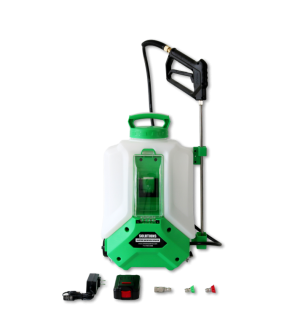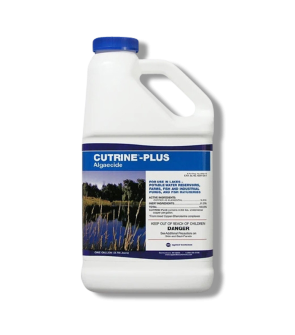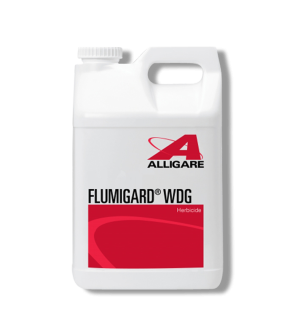Gain access to personalized product screening, the best pricing, rewards, and more!
Most Effective Products
Common Aquatic Weeds in Reservoir
Aquatic plants fulfill many natural and key functions in its environment from regulating water quality, creating oxygen in water, and feeding local aquatic wildlife. However, they can become overabundant and disrupt the streamflows of aquatic sites like reservoirs.
This type of man-made site is used for the storage and release of water for flood control, navigation, and water supplies for domestic industrial, agricultural, and energy sectors of its location. This proves to be challenging when common aquatic weeds like algae, coontail, fanwort, pondweed, and water milfoil develop in reservoirs.
If you are not seeing a aquatic weed listed here, then contact our customer service team by phone, email, or in-person for professional recommendations.
Obtain all necessary approval and/or permits before application if required. Consult the responsible State Agencies (i.e., Fish and Game Agencies, State Water Conservation authorities, or Department of Natural Resources.
Algae
Algaes are a complicated aquatic plant that can be good or bad. On one hand they serve as a food source for some species of fist. But, if left to overgrow they can cause oxygen decrease in water, block sunlight for underwater plants, and depending on the species release toxins in water.
Identification
 Depending on the size and shape of the water site and the species the appearance of algae will vary.
Depending on the size and shape of the water site and the species the appearance of algae will vary.
General characteristics to easily identify algae can be seen with its slimy, green texture that appears as large clumps or blotches in water. Depending on the species, their color will range from green, reddish-brown, or yellow.
Inspection

In water reservoirs, algae can be found on the top layer of water or along the bottom and sides of these sites.
Treatment
Step 1: Apply Cutrine Plus Algaecide
Cutrine Plus Algaecide is a copper-based algaecide specially designed to control algae within a couple of days of application of potable water reservoirs and other aquatic sites.
Determine how much Cutrine Plus Algaecide to use by measuring the acre-feet of the reservoir. To do this, measure the length, width, and average depth of the water in feet then multiply these three values together (length X width X length). Take that total and divide it by one acre to find the acre-feet (total / 43,560 = acre-feet).
Before applying, dilute the required amount of this product with enough water to ensure even distribution with the type of equipment being used. Typical dilution range is 9:1 when using backpack-type sprayer or up to 50:1 when using water pump equipment or large tank sprayers.
A general algae application will use 0.6 gallons of Cutrine Plus Algaecide per acre-ft.
Coontail
When coontail grows to a nuisance level, undesirable effects such as oxygen depletion from choked out desired plants and scummy appearance can be expected in waters of reservoirs.
Identification
Coontails are free-floating aquatic plants that form in dense mats that range up to 8 feet long. The leaves of this plant are divided or forked into long branched stems that float freely.
Inspection
Coontails can be found within 20 feet deep of water reservoirs. It will form near the bottom of these sites.
Treatment
Step 1: Apply Flumigard WDG (Clipper) Aquatic Herbicide Flumioxazin
Flumigard WDG (Clipper) Aquatic Herbicide Flumioxazin is a flumioxazin based water-dispersible granule that provides a fast and long-term solution against weeds on lands and aquatic sites like reservoirs.
Determine how much Flumigard WDG (Clipper) Aquatic Herbicide Flumioxazin to use by measuring the square footage of the treatment area. To do this, measure the length and width of the treatment area in feet then multiply them together. For acreage, take the square footage and divide it by one acre (square footage / 43,560 sq. ft. = acre).
To get rid of coontails, apply 1.1 lbs. of Flumigard WDG (Clipper) Aquatic Herbicide Flumioxazin per surface acre with a water depth of 1 feet.
This product will need to be applied with a subsurface trailing hose designed to distribute the herbicide within the plant stand.
In areas with dense weed vegetation, only treat ½ the water body at one time and wait 10-14 days before treating the remaining area.
Fanwort
Fanwort is a fast-growing aquatic plant that has the potential to become an invasive weed in water reservoirs. These aquatic weeds can outcompete native plants and regrows from any portion of the plant.
Identification

The color of these flowers vary from white to yellow.
Inspection
Fanwort spreads by fragmentation and roots itself in the sediment of the soil reservoir. They will be completely submerged under the surface of the water.
Treatment
Step 1: Apply Flumigard WDG (Clipper) Aquatic Herbicide Flumioxazin
To control fanwort in reservoirs, we recommend using an aquatic herbicide like Flumigard WDG (Clipper) Aquatic Herbicide Flumioxazin.
Determine how much Flumigard WDG (Clipper) Aquatic Herbicide Flumioxazin to use by measuring the square footage of the treatment area. To do this, measure the length and width of the treatment area in feet then multiply them together. For acreage, take the square footage and divide it by one acre (square footage / 43,560 sq. ft. = acre).
To perform a subsurface application, you will need to use a subsurface trailing hoses in order to place the herbicide under the surface of water.
Apply 1.1 lbs. of Flumigard WDG (Clipper) Aquatic Herbicide Flumioxazin per surface acre with a water depth of 1 feet.
Insert the hose close to the mass of aquatic weeds to thoroughly treat them.
If aquatic vegetation is dense, treat submersed weeds in sections to avoid a rapid decrease in dissolved oxygen.
Pondweed
Pondweed is an invasive aquatic plant that grows particularly dense stands, which reduces oxygen for fish and triggers algae blooms leading to increase of toxicity of water reservoirs.
Identification
There are various species of pondweeds, but there are a few common characteristics they share that make them easily identifiable.
Pondweeds will have thin linear, ovate, or lance-shaped leaves. Some pondweed types have small clusters of flowers along the spikes. Depending on the species, they will range between 2 to 3 inches long.
Inspection
Depending on the pondweed species, they may be completely submerged along the bottom or sides of reservoirs or have floating vegetation on the surface of water.
Typically they will appear in the shallow water parts.
Treatment
Step 1: Apply Flumigard WDG (Clipper) Aquatic Herbicide Flumioxazin
Pondweed species such as curlyleaf, sago, and variable-leaf will be controlled in reservoirs with Flumigard WDG (Clipper) Aquatic Herbicide Flumioxazin.
Determine how much Flumigard WDG (Clipper) Aquatic Herbicide Flumioxazin to use by measuring the square footage of the treatment area. To do this, measure the length and width of the treatment area in feet then multiply them together. For acreage, take the square footage and divide it by one acre (square footage / 43,560 sq. ft. = acre).
To perform a subsurface application, a subsurface trailing hoses will be needed in order to place the herbicide under the surface of water.
Simply use 1.1 lbs. of Flumigard WDG (Clipper) Aquatic Herbicide Flumioxazin per surface acre with a water depth of 1 feet.
Place the hose close to the mass of aquatic weeds to thoroughly treat them.
If pondweeds infestations are dense, treat submersed weeds in sections to avoid a rapid decrease in dissolved oxygen.
Water Milfoil
Water milfoil is a nuisance for reservoirs since it outcompetes desired native species with its dense mat forming habit. They may serve as a food source for some wildlife, but its dense growth habits also reduces oxygen levels for fish.
Identification
Depending on the species the characteristics of water milfoil will vary. However, there are some common traits shared between each type.
Leaves are sub-emerged, feather-like, in whorls of 4 to 6, and up to 20 feet long. The stems of these aquatic plants are branched and be dark green in coloration. When dry, they appear more reddish-brown.
Inspection
Water milfoils will grow in parts of the reservoir with standing or slow-moving waters. Common sites for this to be are the sides.
Primarily, water milfoils will be seen under the water surface with leaves several inches below the surface of waters.
Treatment
Step 1: Apply Flumigard WDG (Clipper) Aquatic Herbicide
To get rid of water milfoils in reservoirs, we recommend using Flumigard WDG (Clipper) Aquatic Herbicide Flumioxazin.
Determine how much Flumigard WDG (Clipper) Aquatic Herbicide Flumioxazin to use by measuring the square footage of the treatment area. To do this, measure the length and width of the treatment area in feet then multiply them together. For acreage, take the square footage and divide it by one acre (square footage / 43,560 sq. ft. = acre).
To use Flumigard WDG (Clipper) Aquatic Herbicide Flumioxazin, you will need a subsurface trailing hoses in order to place the herbicide under the surface of water.
Apply 1.1 lbs. of Flumigard WDG (Clipper) Aquatic Herbicide Flumioxazin per surface acre with a water depth of 1 feet.
Insert the hose close to the mass of water milfoil weeds to thoroughly treat them.
When these aquatic weeds are dense in waters, you need to treat in sections to avoid a rapid decrease in dissolved oxygen.
Key Takeaways
What Are Water Reservoirs
- Water reservoirs are man-made lakes made to store water and release when necessary.
What Aquatic Weeds Are Common in Reservoirs?
- Common aquatic weeds in reservoirs are algae, pondweed, coontail, fanwort, and water milfoil.
How to Remove Aquatic Weeds in Reservoirs
- Be sure the proper paperwork is complete then apply an aquatic herbicide such as Flumigard WDG (Clipper) Aquatic Herbicide Flumioxazin or Cutrine Plus Algaecide depending on the aquatic weed species.

















